

Please note to find the plant photos, into the hundreds, please look through the Plant List. Plant photos are a long work in progress, of seedlings, immature leaves etc because no plant keys cover them and it's really frustrating waiting for mature foliage, all the way through to the oldest of what we have. Where possible I will point out features that distinguish the species.
This page only exists still because it is one of the places I get to waffle on......
This is mostly about Syzygium floribundum, they used to be Waterhousea floribunda but they've been reassimilated into Syzygium, that is they were there once before and now they are back again.
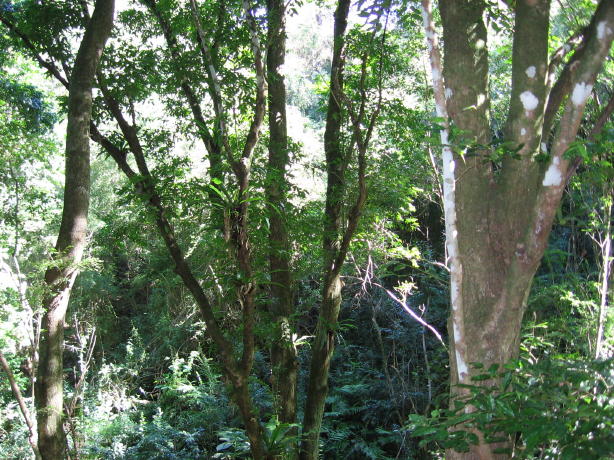
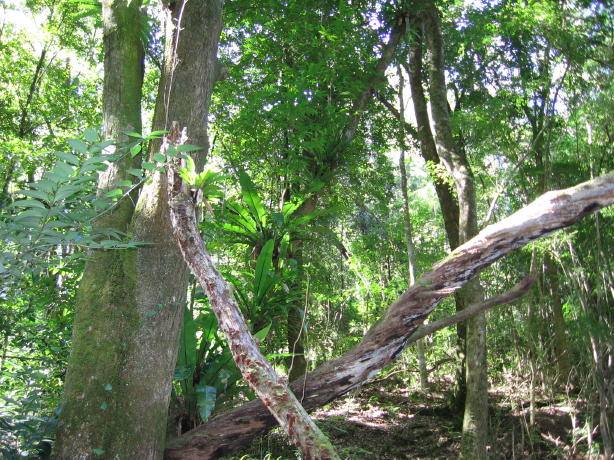
When I ventured into this location at the bottom of our first large gully I began to get some feel for what it may have been like before it was cleared. I'd seen epiphytes on some trees in other locations but never anything quite like this. These 2 photos only show the lower branches. Further up the larger tree, whose trunk you only see side on, the thin side, the Asplenium australasicum (Birds Nest Ferns) dissapear to be replaced by Elkhorn ferns, and probably other smaller ferns I haven't identified.
Most of the forest on the lower slopes would almost certainly been closed Rainforest of one type or another, there are quite a few, we seem to have remnants of at least a few. In closed damp forests you get lots of epiphytes. We seem to have stream side plants on ridges as well, maybe it rains a lot.
The preceeeding photos show what kinds of things you might have found here before it was cleared and burnt, though those trees are most certainly regrowth, so give them a few hundred years, hey presto, Old Growth.
It wasn't till maybe a year or so later I found these very large Waterhousea floribunda on a different part of our creek system in the next photos, I must have walked under them a couple of times. Maybe I was still learning to identify the locals or maybe the Privet undergrowth was too dense to look up through.
These 2 Waterhousea floribunda in the following photos are almost certainly Old Growth and give some idea of how large they can get too. The first one shows roughly where the middle storey probably started and ended, because I believe Waterhousea floribunda are not an emergent or cover story species but I could be wrong. I haven't been able to find any obvious branch scars below the first branches you see but first tree did have another quite large trunk a long time ago.
The largest generally accepted size for the species is 30 metres tall and 75 cm in diameter. At 1.5 metres above ground first one was 113cm and (with the big nob 3 metres up) the second was 128cm in diameter in 2004 when I got around to measuring them. I've no idea how tall they really are but I suspect very close to if not more than 35 metres.
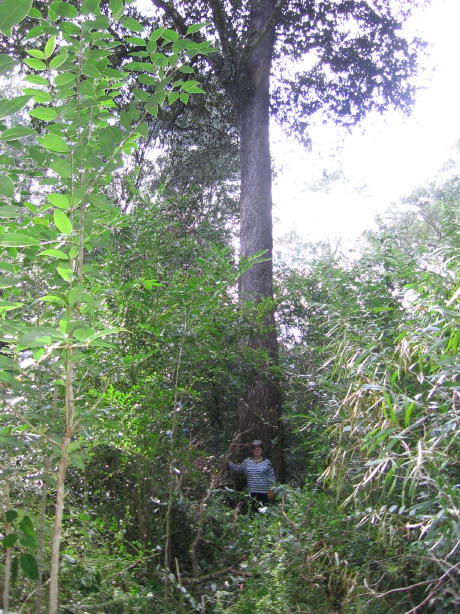
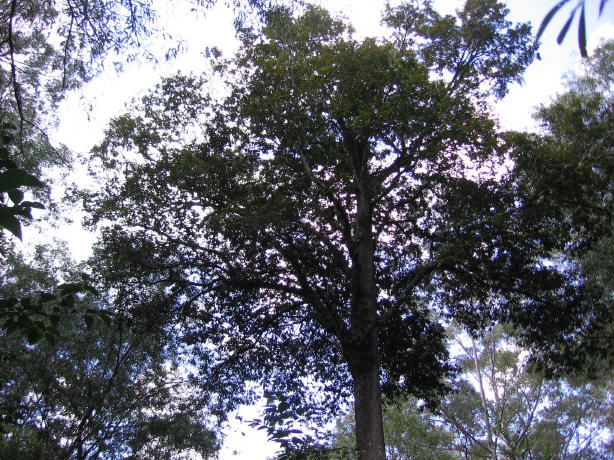
To give some idea of scale, the top of her hat is about 1.5 metres above ground. I'd cleared the Privet around here a couple of years before, this is regrowth.
It was middle of the morning when I took this, afternoon would have been better for detail, I'll take it again sometime in the afternoon, the orchids and ferns will be more obvious then, growing all the way up in the open. Parallax makes it hard to appreciate how tall it really is.
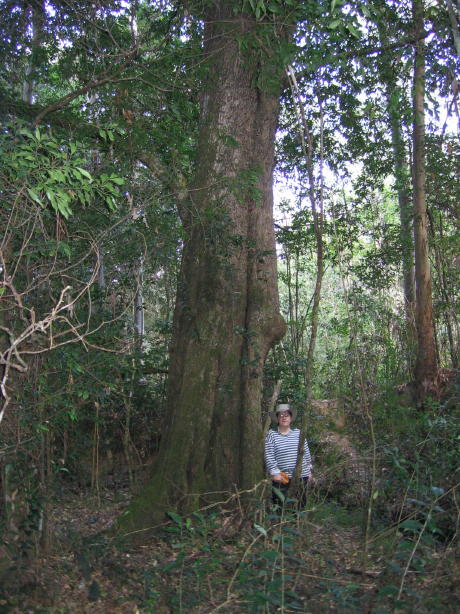
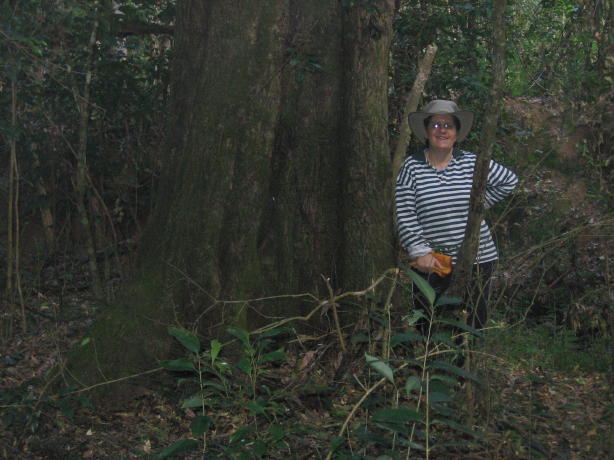
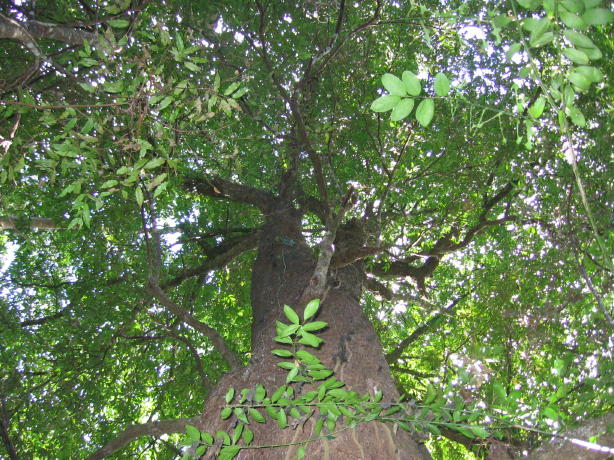
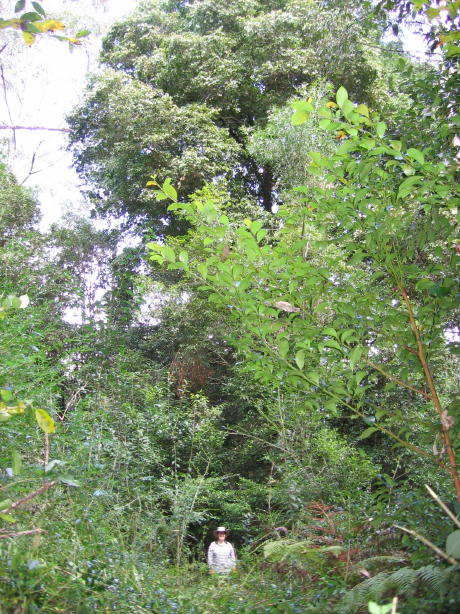
Same tree in the previous 4 shots but Lindsay is about 20 or 30 metres from the trunk. Whatever way I tried I couldn't get everything in the photo, too tall, I couldn't stand far enough back.
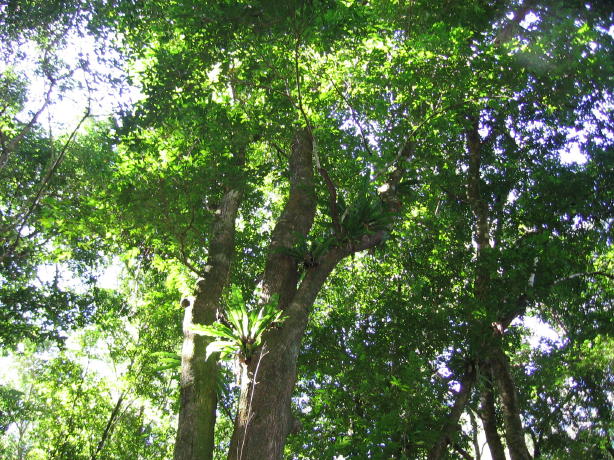
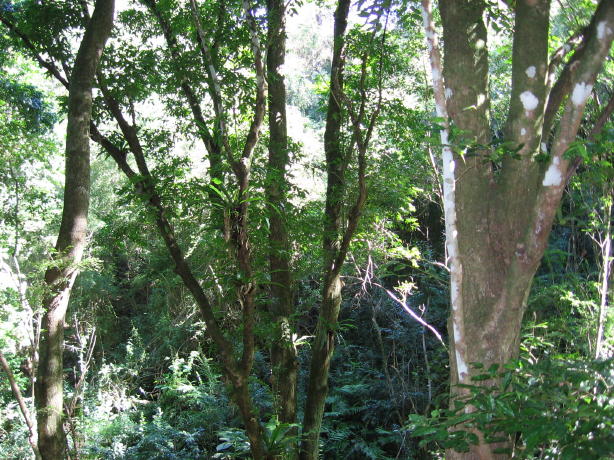

Sassafras